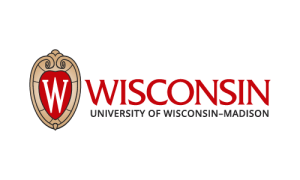University of Wisconsin-Madison: New UW–Madison research projects to benefit Great Lakes
The Great Lakes contain 95 percent of all the fresh surface water in the United States, and Wisconsin is fortunate that two of those lakes make up its northern and eastern borders — 1,000 miles in all, supporting 105 Great Lakes communities.
Stewardship of the lakes is critical for the entire state, which benefits from lakes Michigan and Superior culturally, recreationally and economically.
Wisconsin Sea Grant has announced 12 new two-year research projects worth $2.8 million that build Great Lakes understanding, leading to science-based management and policy decisions. Six of those projects will be done at UW–Madison.
“We often say the Great Lakes are a gift from the glaciers,” said Sea Grant Director Jim Hurley. “This gift is a valuable one—a recent study found 1.3 million jobs are tied to the lakes, with $82 billion in annual wages. Just as the lakes fuel our economy, they also enrich our quality of life.”
The projects officially kick off today with funding from the National Oceanic and Atmospheric Administration, Hurley said.
Research conducted on the University of Wisconsin–Madison campus will be led by:
Christy Remucal, Department of Civil and Environmental Engineering. She will see how per- and polyfluoroalkyl substances (PFAS), so-called “forever chemicals” found in firefighting foam and also household items like Teflon or carpet stain repellant, accumulate and move around in the environment.
Jessie Conaway, Earth Partnership, Department of Planning and Landscape Architecture. She will partner with tribal and non-tribal partners to use existing data and Traditional Ecological Knowledge about Lake Winnebago to gauge water quality and wild rice habitat for the state’s largest inland lake.
Tony Goldberg, School of Veterinary Medicine. He will team with the U.S. Fish and Wildlife Service to build a database of fish viruses in Wisconsin waters. Recreational fishing in Wisconsin is a pleasant hobby and good for the economy. The Wisconsin Department of Natural Resources, for example, sells more than 1 million fishing licenses each year.
Andrea Hicks, Department of Civil and Environmental Engineering. She will explore ways to expand and diversify the state’s aquaculture industry. The U.S. currently imports more than 90 percent of its seafood and there is growth potential in the domestic industry.
Luke Zoet, Department of Geoscience, and J. Elmo Rawling, Wisconsin Geological and Natural History Survey. The pair will assess natural features along the Great Lakes, particularly important because the lakes have been at record-high water levels and that is eroding bluffs and beaches.
Haoran Wei and Mohan Qin, Department of Civil and Environmental Engineering. These two will quantify microplastics in the Great Lakes, a topic of growing concern.
David Hart of the Wisconsin Geological and Natural History Survey will also be part of a project led by investigators at the University of Wisconsin-Milwaukee to look at PFAS in groundwater.
In all, nearly 75 researchers, staff and students will be engaged in this work on the University of Wisconsin System Madison campus, as well as those of Milwaukee, Platteville and Stevens Point. Additionally, the maritime archaeology program at the Wisconsin Historical Society will be funded for Lake Michigan shipwreck exploration.
“This year, Wisconsin Sea Grant is celebrating its 50-year anniversary. We have a long history of supporting not just research, but the up-and-coming researchers across the state who want to meet Great Lakes challenges and opportunities. More than half of the projects announced Tuesday will be led by investigators who are first-time Sea Grant funding recipients,” Hurley said.

